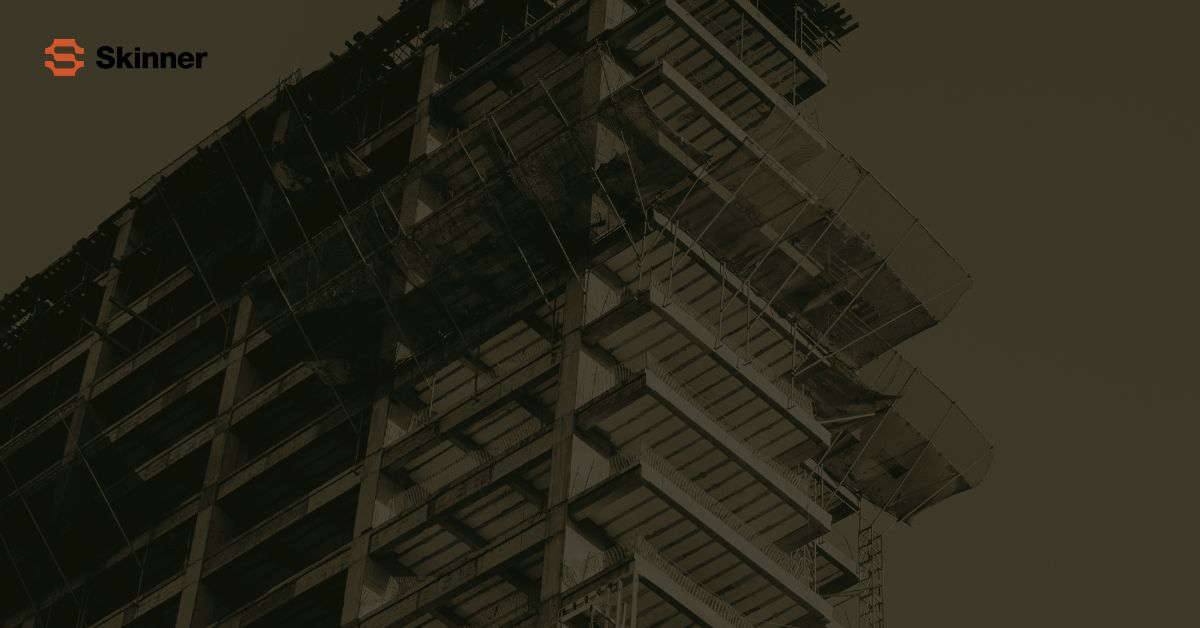Owner-Controlled Insurance Programs (OCIPs) in the Construction Industry
Before the introduction of Owner-Controlled Insurance Programs (OCIPs), contractor insurance was, at times, a difficult beast to tame. Working jointly on large projects, each involved party would have their own insurance, but issues such as inadequate and overlapping coverage produced the potential for muddied waters and disagreements between insurance providers over who was at fault. Since the New York City Housing Authority first used OCIPs in 1947, they have become widely used insurance products for large commercial construction projects across the globe.
What is an Owner-Controlled Insurance Program?
An Owner-Controlled Insurance Program (OCIP) is a type of insurance policy that covers the liability and loss of the owner, contractor, and subcontractors involved in a construction project. In essence, it replaces the traditional model of having separate insurance policies for each party and provides a single plan that covers the entire project. This can add clarity and transparency as well as result in lower costs, but OCIPs are a complex form of insurance that requires careful planning and implementation. As a result, they're typically used for large commercial construction projects with budgets exceeding $50-100 million—but they can also be applied to smaller projects in some cases.
Who Are OCIPs for?
OCIPs are designed specifically for construction projects and are controlled by the project owner, who is responsible for designing, implementing, and managing the program in its entirety. The owner can choose the type, scope, and limits of coverage as well as the insurer, broker, and administrator of the program. Once set up, the program provides coverage for the owner, general contractor, subcontractors, and everyone else involved in the project throughout its duration.
Key Components of OCIPs
General Liability Insurance
Commercial general liability is a key component of OCIPs that covers the legal liability for bodily injury or property damage to third parties should an incident occur during the course of the project. This protects the owner, contractor, and subcontractors from lawsuits or claims related to any accidents, injuries, or damages that occur either on or near the project site. If a claim is filed, general liability coverage also covers the costs of legal defense, settlements, or judgments that may result.
Workers' Compensation
Workers' compensation insurance is another key component of construction insurance that covers medical expenses and lost wages for workers who are injured or become sick as a result of working on the project. This insurance also provides benefits to the dependents of workers who die as a result of work-related injuries or illnesses. Workers' compensation ensures that the workers are compensated properly for any injuries or illnesses that occur on-site and that the owner, contractor, and subcontractors are not held liable.
Excess Liability
Excess liability refers to additional coverage that extends beyond the limits of general liability and workers' compensation. These policies cover the owner, individual contractor, and subcontractors for any catastrophic losses or claims, coverage gaps, or exclusions that exceed the coverage limits of the primary policies. In effect, excess liability provides an extra layer of protection and security for all parties in case of unforeseen circumstances. Examples of these policies might include Builder's Risk Insurance, Umbrella & Excess Liability Insurance, Travelers' Excess Casualty, and Railroad Protective Liability, among many others.
Advantages of OCIPs
Cost Savings for Property Owners
One of the main advantages of OCIPs is that they can reduce the overall insurance costs for property owners. This is because owners can control the insurance costs and avoid paying for overlapping or unnecessary coverage from multiple policies. Owners can also negotiate better rates and terms with the insurers and benefit from economies of scale and bulk discounts. Additionally, the owners can save on administrative costs and legal fees, as they only have to deal with one policy and one insurer.
Streamlined Administration
The use of OCIPs can simplify the insurance administration process for the project. Instead of being tasked with the review and verification of insurance certificates and coverages for each contractor and subcontractor, the project owner can enroll everyone under one comprehensive policy, ensuring all parties have both consistent and adequate coverage. Also, because the owners manage the OCIP, they have more authority over the claims process—which can reduce the potential for disputes and delays.
Greater Control
OCIPs give the project owner greater control over the insurance program and the risk management of the project. The owner can design, implement, and manage the OCIP, choose the type, scope, and limits of coverage, and pick the insurer, broker, and administrator of the program at their discretion. Plus, the project owner has more authority over the claims process, which can help to reduce the potential for any disputes or delays. All of this means more visibility and oversight over the project.
Continuous Coverage With No Gaps
OCIPs provide continuous, gapless coverage for the duration of the entire project or group of projects. By extending coverage past project completion, project owners can ensure that they and all other parties involved in the project don't face the risk of liability or loss even through the warranty or maintenance period.
Tailored Coverage for Specific Needs
OCIPs can provide customized coverage that meets specific needs and aids with the risk management of the project. The project owners choose the type, scope, and limits of coverage and can design the OCIP accordingly based on these requirements. They can also include specialized coverage depending on the nature of the project, such as pollution liability or professional liability.
Protection From Losses for Enrolled Parties
OCIPs offer protection from losses for all parties involved in the project. The OCIP covers the liability and loss of the owner, contractor, and subcontractors, but it can also be designed to cover other parties such as architects, engineers, consultants, and suppliers. This protection lasts from the start of construction to the completion and handover of the project—and it may even extend through to the warranty or maintenance period.
Disadvantages of OCIPs
Best Suited for Large Construction Projects
OCIPs are designed to be used for large construction projects with budgets exceeding $50-100 million. This is due to the fact that OCIPs require a lot of planning, coordination, and administration which may not be cost-effective or even feasible for smaller projects. OCIPs also depend on the availability and willingness of insurers, brokers, and administrators to offer and support these programs. As a result, they may not be the best option for smaller or simpler projects that can achieve adequate insurance coverage through traditional insurance policies.
One Entity is Responsible for the Full Implementation
OCIPs place a lot of responsibility and burden on the single entity that sponsors and controls the program (typically the project owner). The owner has to design, implement, and manage the OCIP, as well as coordinate with the insurer, broker, and administrator of the program. They have to enroll all the parties, monitor and audit the program, handle the claims process, and ensure that any claims are reported, investigated, and settled. These processes may create an administrative burden and could potentially expose the owner to risks or liabilities if the OCIP policy isn't set up or maintained properly.
Potential Disruption of Relationships With Current Brokers and Insurers
OCIPs have the potential to cause disruption or dissatisfaction among contractors and subcontractors who are accustomed to having their own insurance policies and value their relationships with their chosen insurance company or insurance broker. Some contractors may view the OCIPs as a loss of control over their insurance decisions or as a sign of interference from the owner. Questions regarding the quality or adequacy of the OCIP coverage may also arise.
In an effort to provide reassurance, the project owner should always provide clear communication to contractors about the benefits and expectations involved in the OCIP and address any issues or questions promptly.
OCIP vs. Controlled Insurance Programs (CIPs)
Both OCIPs and CIPs are insurance policies that cover all parties involved in a construction project under one plan, and they have similar coverages including commercial general liability, workers’ compensation, and excess liability coverages. They both share benefits such as cost savings, zero gaps in coverage, more competitive bidding, and simplified claims processes, and both policies cover the owner, general contractor, subcontractors, and all others involved in the project.
That said, there are a few key differences:
- OCIPs are sponsored and controlled by the project owner, while a contractor-controlled insurance program is sponsored and controlled by the general contractor.
- OCIPs are typically used for large-scale commercial real estate projects valued at over $50 million, while CIPs are becoming more common for projects of any size.
- OCIPs may cause some contractors and subcontractors to feel unhappy or uncomfortable with the owner’s control over their insurance decisions, while CIPs may be more acceptable and familiar to them.
OCIP Administration
OCIP administration involves the role of the program manager, the responsibilities of enrolled parties, and the claims handling process. The program manager is responsible for the day-to-day support and provides assistance to the various contractors working on the project. Enrolled parties, including the owner, general contractor, subcontractors, and all others involved in the project must cooperate fully with the OCIP administrator and the OCIP insurers. The claims handling process can be clear and streamlined if the OCIP is being administered properly and the general contractor doesn't have to concern themselves with potential claims related to subcontractors.
OCIP Coverage Extensions
Sometimes, it's necessary to extend coverage beyond project completion or tailor coverage to meet specific needs. Coverages such as pollution liability insurance, builder’s risk insurance, professional liability insurance, or umbrella insurance may need to be extended to ensure that the project owner is protected from any potential claims that may arise after the project is completed.
OCIP and State Construction Anti-Indemnity Acts
In some states, OCIPs are excluded from the scope of anti-indemnity acts which can improve the efficiency of claims and project scheduling. This exclusion means that insurance programs held by enrolled parties could be insulated from losses, and the OCIP's protection remains valid. That said, the protection isn't limitless, and OCIP coverage should extend beyond the completion of the project and through the applicable statute of repose.
Frequently Asked Questions (FAQs)
What does OCIP mean in insurance?
OCIP is an acronym for Owner-Controlled Insurance Program, which is a type of insurance program that the project owner controls. OCIPs provide coverage for all parties involved in a construction project under one plan.
What is the difference between OCIP and CCIP?
The main difference between OCIP (Owner-Controlled Insurance Program) and CCIP (Contractor-Controlled Insurance Program) lies in who controls the insurance. In an OCIP, the project owner controls the insurance, while in a CCIP, the general contractor controls the insurance.
What is the use of OCIP?
The use of OCIP is to provide comprehensive insurance coverage for all parties involved in a construction project, including the owner, general contractor, subcontractors, and others under a single insurance plan.
What is the difference between an OCIP and wrap-up insurance?
OCIP is a type of wrap-up insurance. Wrap-up insurance programs like OCIPs provide consolidated coverage for multiple parties so that each party doesn't require their own separate insurance plan.
What does OCIP stand for?
OCIP stands for Owner-Controlled Insurance Program, which is a type of insurance product that covers construction projects in their entirety (owner, contractors, subcontractors, workers, and more).
What are the benefits of OCIP?
The benefits of OCIP include lower costs, time saved, clearer claims tracking, improved claim efficiency and project scheduling, no gaps in coverage, more competitive bidding, and simplified claims processes.
Need help with OCIP?
Implementing an OCIP can provide significant benefits for construction companies, from cost savings and streamlined administration to tailored coverage for specific needs and protection from losses for enrolled parties. OCIPs are widely used on public sector construction projects and capital improvement programs, as well as on large individual projects with budgets exceeding $50 million in hard construction costs. If you're a project owner looking into OCIPs, consider the needs of your project, the associated insurance premiums and deductibles, as well as your administrative capacity for successful implementation.






